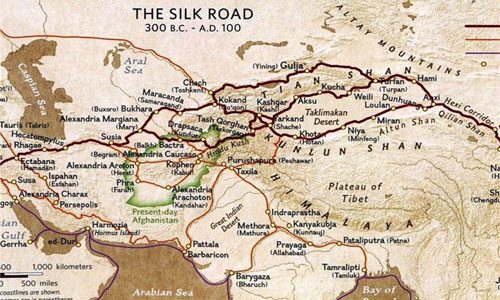The member states of China-proposed Belt and Road Initiative (BRI), consists of two primary components; the overland Silk Road Economic Belt and the sea-based 21st-century Maritime Silk Road, have extended rapidly and Beijing hosted the second Belt and Road Forum for International Cooperation in late April to support the initiative and cement commercial and cultural ties between member states. Official figures show that a total of 152 countries, including Afghanistan, and international organizations have signed cooperation documents with China on the initiative over the past six years.
The BRI makes the headlines in world newspapers in general and in Chinese media in particular. The initiative has its own proponents and opponents, but it is believed that since the BRI advocates trade, transit, and connectivity around the globe, it carries increasing significance in modern world.
Speaking in the sixth edition of Vision China, a series of talks organized by China Daily, Zhao Jianguo, director general of the International Communication Bureau of Publicity Department of the CPC Central Committee, is cited as saying that three points should be observed on BRI cooperation. First, BRI needed to build consensus while upholding the spirit of extensive consultation, joint contributions, and shared benefits. Second, it needed to engage think tanks from around the world, which has already been driving forces for the initiative. Third, it needed a youthful injection of will and spirit.
Building global consensus for the BRI is highly significant. China needs to remove doubt about the initiative and design its scope and roadmap to achieve regional and global consensus.
“We trust that with the strengthening of effective cooperation under the Belt and Road Initiative, China will provide new opportunities and serve as a powerful driving force for global development in the new era. And we trust that today’s talks will help create consensus on the B&R Initiative as part of the efforts to build a global community of shared future,” said Zhou Shuchun, publisher and editor-in-chief of China Daily, in the edition of Vision China, themed “Belt and Road, Shared Future”.
Afghanistan is one of the BRI’s stakeholders and signed Memorandum of Understanding with China in 2016 to regain its historical position as an “Asian transit and trade roundabout” connecting South Asia to Central Asia and East Asia to West Asia.
Commercial and cultural exchanges between China and Afghanistan have increased recently. Following the opening of Afghanistan-China Air Corridor in November 2018, trade volume between the two countries has surged up and it is estimated that the corridor will enable Afghanistan to export 23,000 tons of pine nuts to the Chinese market annually, while saffron and precious stones will be also routed to China through the newly opened link.
Afghanistan has great economic potential and untapped natural resources to be exploited. Earlier, Second Vice President Mohammad Sarwar Danish said, “Recent US research shows Afghanistan has natural resources worth trillions of dollars, the country is bestowed with 1400 types of minerals and the Hajigak natural reservoir contains 1.8 billion worth tons of iron”. With this in mind, Afghanistan will be able to effectively exploit its natural resources and boos its trade through aligning its economic activities with the BRI.
Afghan province of Badakhshan shares border with China’s Xinjiang Uyghur Autonomous Region, where I, along with other media delegates, visited in late April on a media tour themed “The Core Zone (Xinjiang) of the ‘Silk Road Economic Belt’ Media Event”. It is said that Badakhshan province had signed an agreement of intent to establish sister-province relationship with Xinjiang, which will promote cooperation at provincial level. On my recent trip, I have found that Badakhshan and Xinjian have many things in common. For instance, I found the delicious food and fruit of not only Badakhshan but those of entire Afghanistan in Xinjiang. The residents of Xinjiang had the very hospitality of Afghans as they received us with open arms. I felt that the friendship between Afghanistan and China will go beyond the high mountains and limitless deserts that Xinjiang and Badakhshan carry in their hearts. The BRI will further enhance cultural exchanges and people-to-people contact and boost commercial ties between the two friendly nations.
It should be noted that China has also played a constructive role in Afghanistan’ peace process since stability is of high importance for trade and transit. Afghanistan welcomes China’s support in this regard and deems it very essential for economic development.
It is hoped that the BRI will provide a better platform for international cooperation as well as a platform for further commercial and cultural exchanges between Afghanistan and China.
Home » Opinion » BRI – A Platform for Mutual Cooperation
BRI – A Platform for Mutual Cooperation
| Hujjatullah Zia

